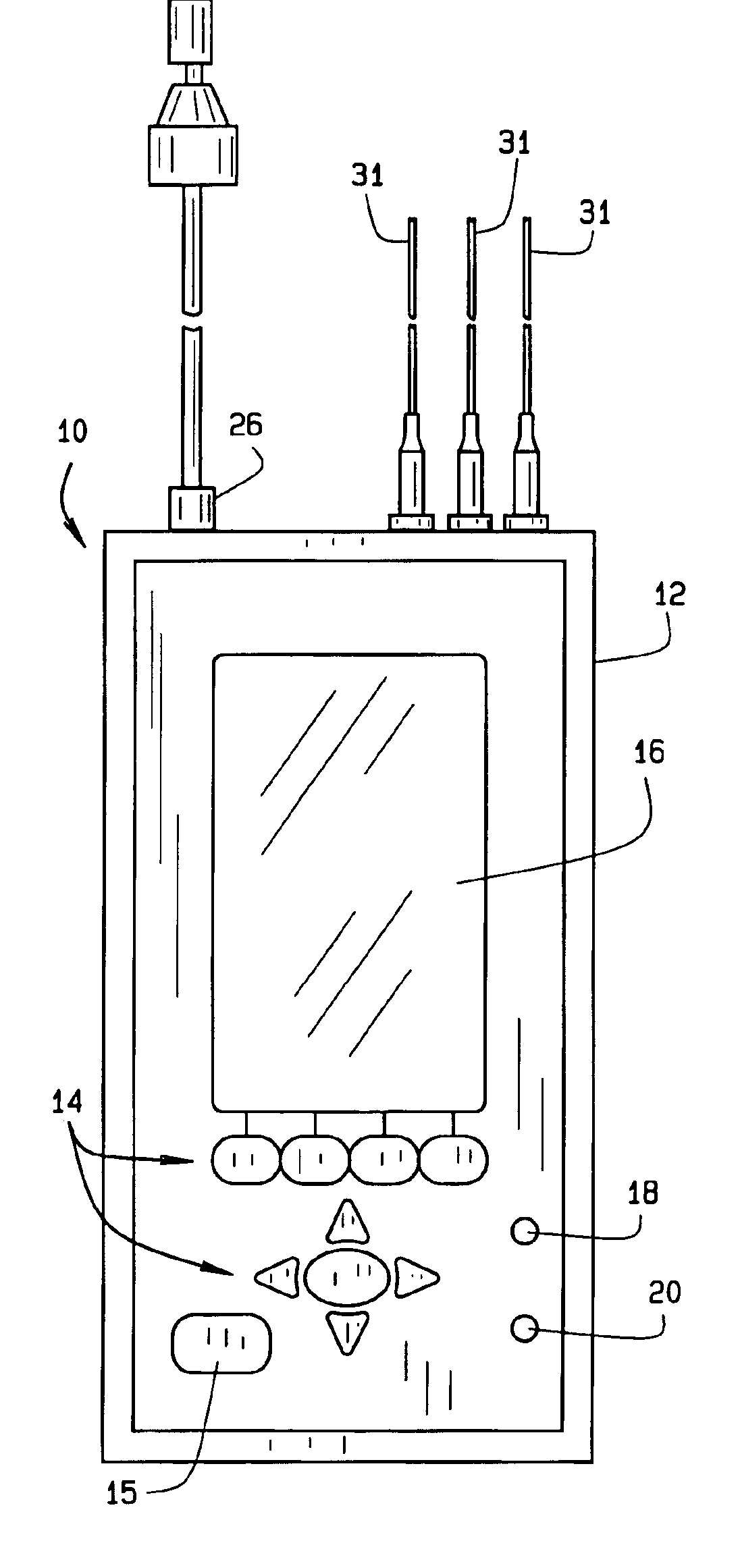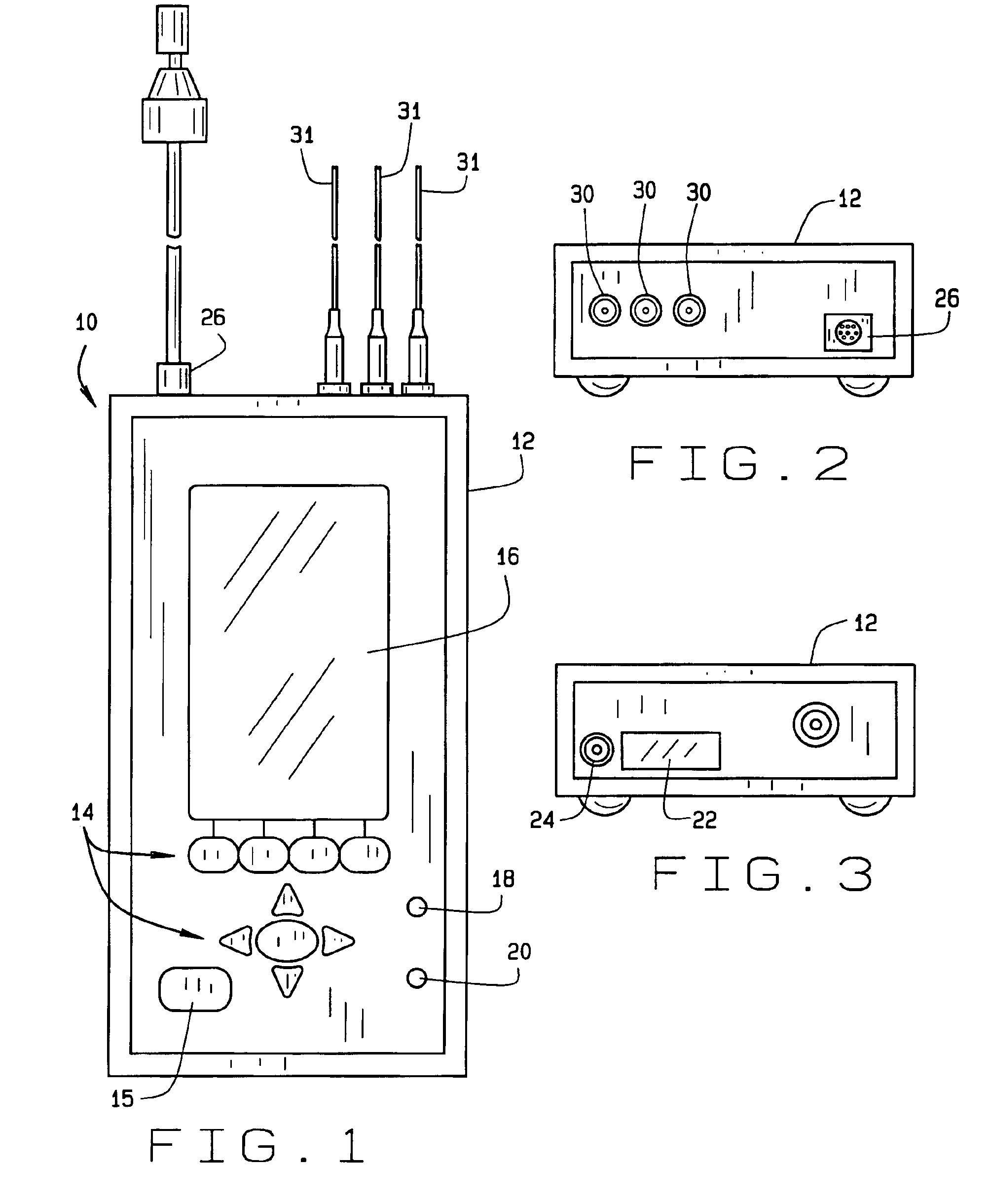Handheld low voltage testing device
a low-voltage testing and handheld technology, applied in the direction of diagnostic recording/measuring, instruments, applications, etc., can solve the problems of handheld test equipment, particularly susceptible to such signal noise and interference, and low-voltage electrical signals in the sub-microvolt range can be extremely difficult to detect, and achieve the effect of effective auditory screening devices
- Summary
- Abstract
- Description
- Claims
- Application Information
AI Technical Summary
Benefits of technology
Problems solved by technology
Method used
Image
Examples
Embodiment Construction
The following detailed description illustrates the invention by way of example and not by way of limitation. The description clearly enables one skilled in the art to make and use the invention, describes several embodiments, adaptations, variations, alternatives, and uses of the invention, including what is presently believed to be the best mode of carrying out the invention.
Referring now to FIG. 1 through FIG. 3, reference numeral 10 illustrates one embodiment of the hand-held sub-microvolt electrical signal measurement device of the present invention. The measurement device 10 includes an enclosure 12, which in the preferred embodiment, and for purposes of illustration and not for limitation, measures 7¼″ long by 3¾″ wide by 1½″ deep. It is important to note that the device 10 can be carried by the user without compromise, and truly represents a portable hand-held device having full functionality as described below. The device 10 includes a keyboard 14 and an LCD display 16. One ...
PUM
 Login to View More
Login to View More Abstract
Description
Claims
Application Information
 Login to View More
Login to View More - R&D
- Intellectual Property
- Life Sciences
- Materials
- Tech Scout
- Unparalleled Data Quality
- Higher Quality Content
- 60% Fewer Hallucinations
Browse by: Latest US Patents, China's latest patents, Technical Efficacy Thesaurus, Application Domain, Technology Topic, Popular Technical Reports.
© 2025 PatSnap. All rights reserved.Legal|Privacy policy|Modern Slavery Act Transparency Statement|Sitemap|About US| Contact US: help@patsnap.com



